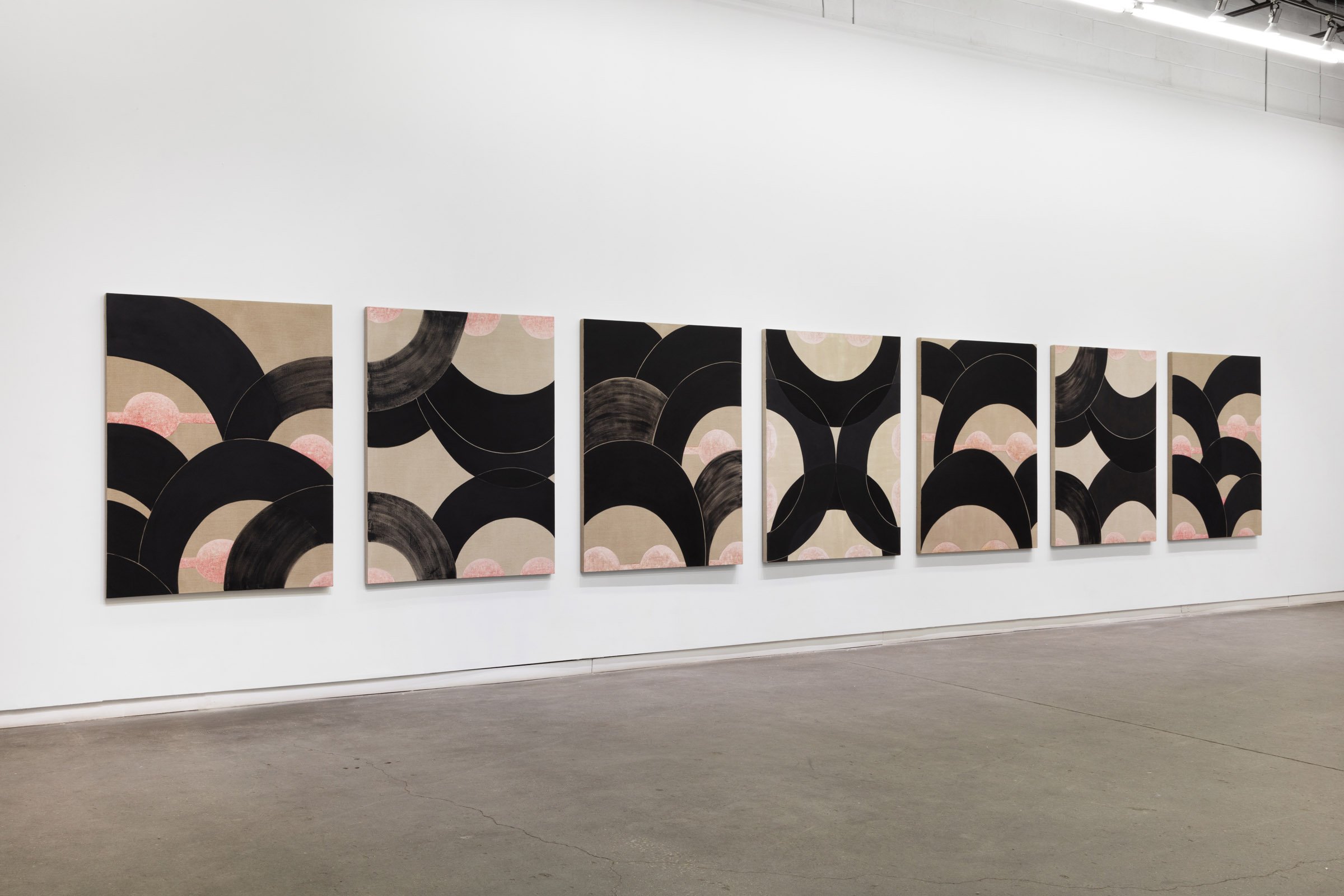Narrated walkthrough of exhibition Utopias Come in Waves
Utopias Come In Waves, Daniel Faria Gallery, Toronto, March 20, 2020 - June 13, 2020
Daniel Faria Gallery is pleased to present Utopias Come In Waves, Kristine Moran’s fifth solo exhibition with the gallery.
Let your mind wander for a moment. While your arms slice into the water and your feet are in motion, wander. For a moment you forget you’re still in the water. Don’t forget. Don’t shiver. Swim faster. Focus on the shore. Where is the shore? There is no bottom to touch down upon. No resting place. One hundred feet below is the resting place. Don’t rest. Dark muddy water. Now I’m afraid of you. Where does my hand go below me with every stroke? Disappearing below me with every stroke. Short breath, stroke, stroke, stroke.
Four years ago, Moran took up swimming as a daily ritual and it soon became subject matter in her work as well. The “Mad Cap Swimmers” paintings contend with the sensations, rhythms and mental states experienced during long intervals spent swimming across large bodies of water. On the water, where stillness can lead to death, swimming becomes a metaphor for the human will to push through adversity – the desire to survive.
The gesture of the swimmers’ black caps bridge one work to the next in a lateral rhythm, a nod to Frank Stella’s Protractor series from the late ‘60s, where the goal is not to make one dramatic or signature shape, but rather a series of simple, seemingly interchangeable units that are part of an ongoing process of building. However, while Stella has been known to say of his work, “what you see is what you see,” Moran’s work is imbued with narration, figuration and subjectivity.
The water begins to rise and the swimmers are ready. They have been training for the challenge ahead. Their goal is an ambiguous landscape that is in view but just out of reach. But like most utopias – and like most desires – that view is unattainable by its very nature.
In a new series of landscapes, Moran strives to create “impossible spaces,” where interchangeable figure/ground relationships induce a feeling of instability and where forms simultaneously push in and pull out. Informed by the work of Lorser Feitelson, who utilizes discordant colour combinations to enhance the unsettling spatial effects in his “Magical Space Forms” series, Moran explores how one might use the push and pull effect of colour and form to reflect broader societal concerns.






